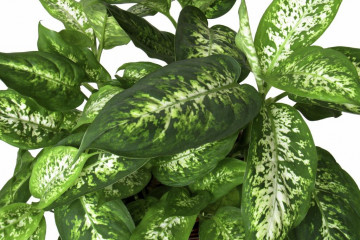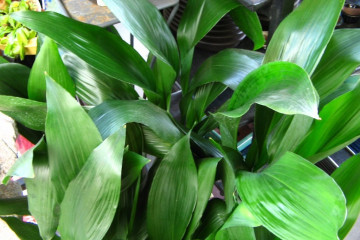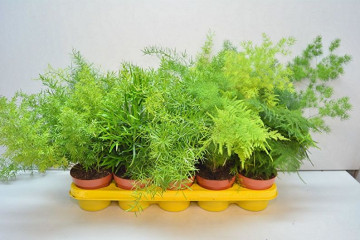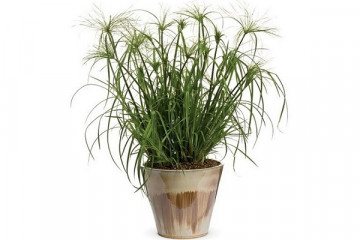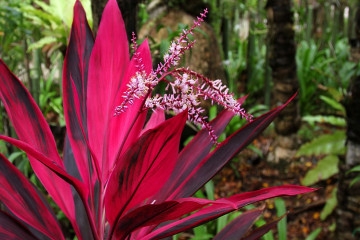Yucca flower - home care
Content:
The yucca flower can be grown both at home and in the garden. In the latter case, it is widely used in landscape design, and in the apartment it is a decoration of the room. The original appearance gives a special flavor to the general atmosphere of the house.
What does a yucca look like, which family does it belong to

Yucca in the interior
Indoor yucca belongs to evergreens, is a representative of the Asparagus family. The culture has linear-lanceolate leaf plates without petioles, the base is attached to a common rosette. The color of the foliage is blue-green, darker or lighter, stripes, secondary red or pink coloration may be present on it.
In nature, the flower lives in the eastern and southeastern lands of the United States, preferring sandy or rocky soils, roadsides, or any open places. It is distinguished by its unpretentiousness, drought tolerance and love of light. Doesn't have any special nutritional requirements.
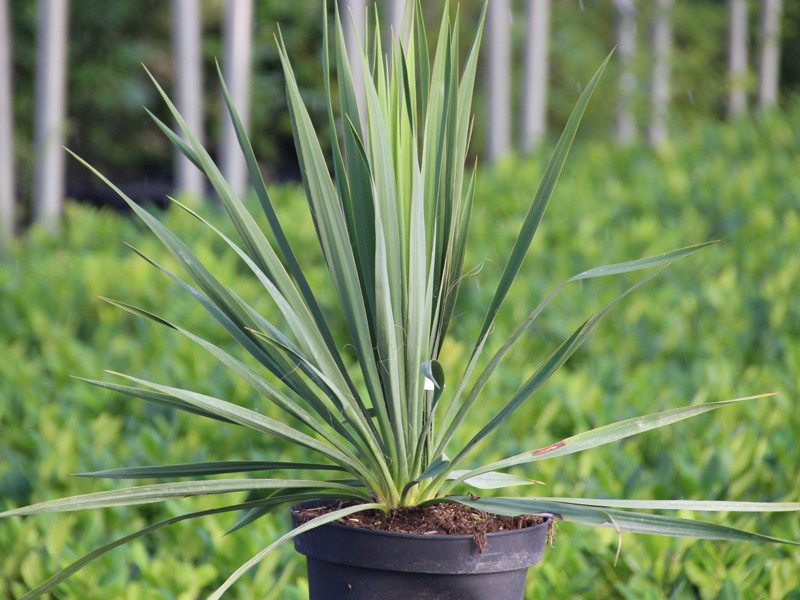
Filamentous yucca
Common varieties
Certain subspecies of culture have gained popularity among flower growers. They are listed below.
- Shidigera
It is known for its voluminous rosette of long foliage. The xiphoid plates are dark green in color; in adults, they are located on the crown. The variety is characterized by rapid and active growth.
- Gray yucca
It can grow up to 2 m, leaf plates from 35 to 65 cm long, bordered at the edges with a white or gray rim. The foliage is collected in dense rosettes.
- Elephant or Elephantis
With a tree-like stem, the apex is decorated with fibrous, highly branched leaf plates with a light green tint.
- Radiant (Y. radiosa)
It grows up to 1.5 m, has elongated foliage, from 50 to 60 cm, collected in a dense bunch. The width of the sheet plates does not exceed 1 cm.
The plant does not require frequent irrigation and feeding. The only condition is that it cannot be exposed to direct sunlight, it is better to send it to the eastern or western windowsill.
- High yucca
A large perennial growing as a shrub or tree, 1.2 to 4.5 m in height. Thin leaves 25 to 95 cm long, 0.2 to 1.3 cm wide.In adult plants, the plates lose their natural discoloration, droop and turn yellow.
- Glorious
It is characterized by slow growth, it can grow up to 3 m. The leathery surface of green foliage is decorated with a prominent central vein. The leaf rosette is lush, young growth forms rosettes near the roots, adults - a strong trunk.
- Aloe leaf
It has no side shoots, all forces are directed to the development of a powerful trunk. The spherical crown consists of hard dark green plates. The rosette of the flower is beautiful and dense, with denticles at the edges and a single thorn at the tip.
- Trekula
South American beauty with treelike stems, not prone to branching. A lush crown is formed due to leaf plates collected in dense rosettes.
The foliage is painted in a bluish-green tint, pointed at the end. The triangular leathery leaves have a slight curvature at the thinnest part.
- Filamentous yucca
The culture does not have a main stem, it grows in the form of a bush. Whitish or yellowish stripes are visible on the bluish-green foliage. The length of the plate is 70 cm, the width is no more than 4 cm. There are whitish threads along their edges.
- Coracoid
The second name of the subspecies is Rostrat. The description indicates that the tree has a thick palm-shaped trunk, on which traces of dead foliage are visible. The top is decorated with a beautiful rosette of long lanceolate leaf plates. The culture is used as a decoration for a winter garden or living room.
- South
It is distinguished by its high growth, with a highly branched upper part and trunk, reaching one meter in adult specimens. Short sheets are located next to each other, dark green in color, along the edge there are threads.
- Copstack
Compact variety up to 1.5 m in height, with bright green foliage. The plates do not have the standard stiffness of their fellows. The rosette is not lush, is formed near the roots, the dying off of the leaves begins from the bottom.
The culture does not put forward special requirements for watering and indicators of air humidity, propagates by apical cuttings or division of the root system.
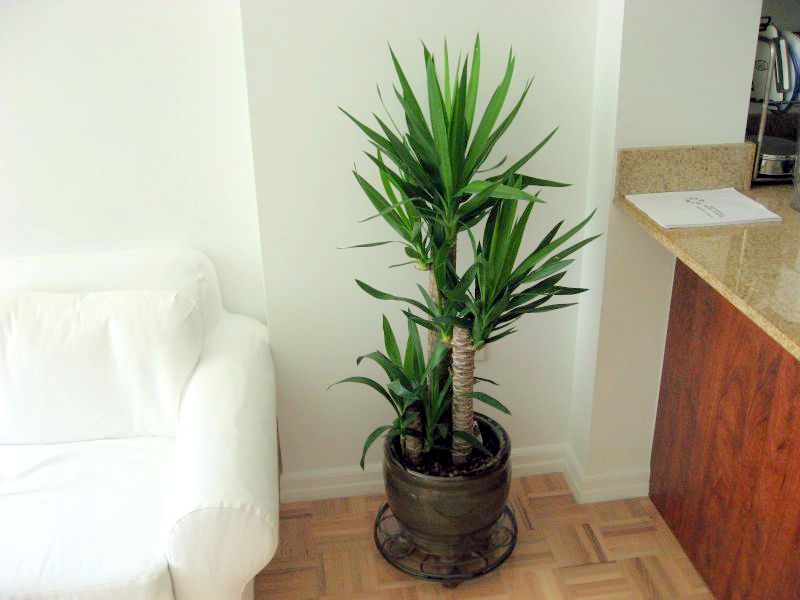
Elephant yucca
Indoor yucca - home care
Plant maintenance is not difficult even for novice florists. If you want to get blooming, the task will become more difficult.
Temperature
Homemade yucca prefers to live at a temperature of 22-26 degrees. In winter, the indicators are reduced to 16-20 degrees.
Lighting
To grow a beautiful flower, you need to provide it with enough light. Lighting is important for juveniles, but they are vulnerable to sunburn. In the midday heat, it is better to shade them or keep the tree outside the sunny windowsill.
Watering
Moisturizing is carried out abundantly and regularly. Best done after the topsoil has dried.
Spraying
Spraying should be carried out in the morning or evening - this approach will help prevent burning of the foliage.

Regular spraying
Humidity
Optimal rates are 40-50%. You do not need to use additional devices for humidifying the air.
Priming
Plants prefer light, loose and nutritious soil. Professionals try to use ready-made store-bought soil, which is made for palm trees or dracaena.
Top dressing
The composition of the soil for a representative of desert cultures does not really matter. Fertilizers are necessary for active growth of green mass, in late spring and early summer. Top dressing is carried out twice:
- to activate the growing season - in May;
- for the formation of buds and long flowering - in June.

Variety of dressings
Features of winter care
In the winter months, the culture requires additional illumination, daylight hours should be extended to 17 hours. For this, fluorescent lamps or specialized phyto-lamps are used, which are sold in flower shops.
When and how it blooms
How indoor yucca blooms: domesticated specimens almost never please their owners with flowers. To obtain the buds, it is necessary to create special conditions of detention and special care, which can only be performed by experienced gardeners.

Flowering plant
Pruning
Reducing the size of the crop is carried out in certain cases:
- with growth over 50 cm;
- to increase splendor;
- if it starts to die - to get cuttings;
- with a pronounced curvature of the trunk - to avoid its fracture;
- when affected by diseases or pests.
How yucca reproduces
Caring for a yucca at home also implies reproduction. There are about seven methods for obtaining young specimens. Common ones include cuttings, growing from seeds and shoots.
Shoots
For the operation, root or stem parts are needed, which are cut from the trunk and deposited as they appear. For normal development, there should be no more than 5 sprouts in one pot. Rooting is done according to the following scheme:
- After pruning, the cuts are pollinated with charcoal powder to avoid future decay.
- Shoots are sent to containers with moistened sand, irrigated a little.
- The container is covered with a glass jar or polyethylene, placed in a room with a temperature of 20 degrees.
- The mini-greenhouse is ventilated daily, with the removal of condensate.
- After 2 months, after the formation of the first roots, they are transplanted into small containers filled with nutrient soil.
Air layering
The method belongs to the simplest and is used for diseased flowers. It is used for decay of the root system and preserved solid sections of the trunk. The process follows the algorithm:
- After examining the flower, healthy areas are selected, they should be located 10 cm above the rot.A sharp knife is used to remove the bark, creating a strip of 5 cm in a circle.
- The cleaned part is covered with sphagnum moss, pre-moistened, and covered with plastic wrap on top. It is sprayed daily with water from a spray bottle.
- After 20 days, the first roots will appear, they are also moistened. After they grow up to 5 cm, the area is cut off - below the point of removal of the bark.
- Sections are dried and treated with activated carbon powder.
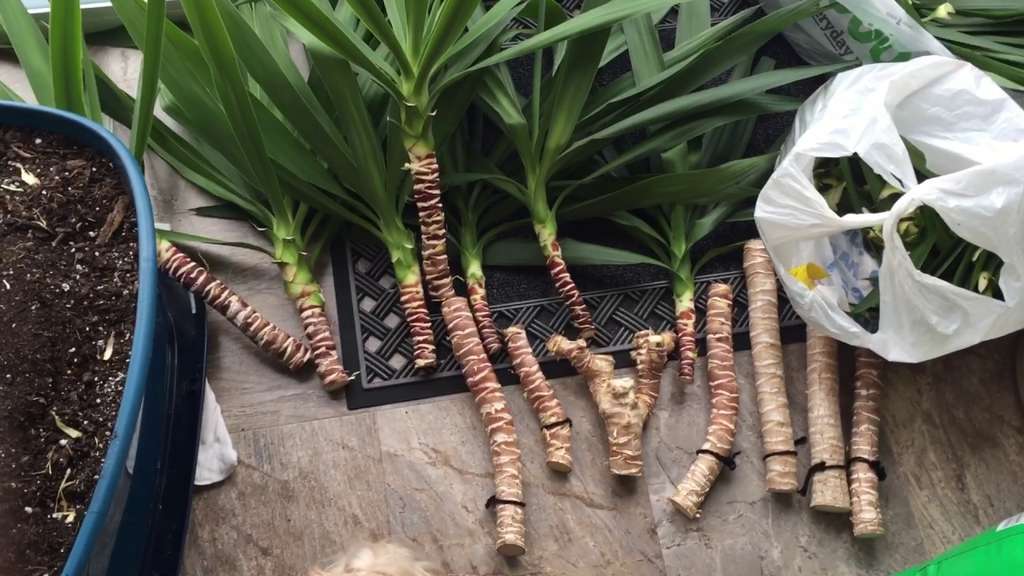
Propagation by cuttings
Transfer
A newly acquired plant is not transplanted, it is given some time to adapt to new conditions. After the procedure is carried out:
- They take a container several centimeters larger than the original flowerpot. Vermiculite is added to fresh soil to increase the level of friability.
- The bottom is covered with drainage: pebbles, expanded clay, gravel are used.
- It is better to transplant the bush by the transshipment method, together with an earthen clod. The plant is deepened by no more than 3 cm. The remaining voids are filled with soil. The first watering is carried out in 48-72 hours.
Youngsters are placed separately from the rest of the flowers, for two weeks they are constantly monitored. After the end of the acclimatization period, he is sent to a permanent place, not forgetting to feed.
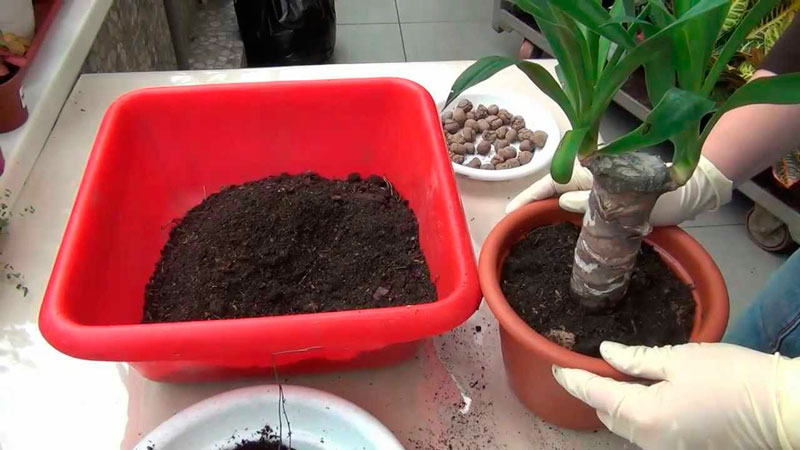
Transfer work
Diseases and pests
False yucca palms are distinguished by good health, but disturbances in the stable functioning of the immune system can be associated with mistakes in courting.Common problems include:
- using ice cold tap water immediately from the tap;
- damage to the root system;
- constant waterlogging or hypothermia of the soil;
- location in the area of constant drafts.
If the culture is constantly in a cool room and is over-watered, then the result of the error will be rotting of the root system. The first signs of the problem include the visible lethargy of the leaf plates, they begin to dry and fall off. Rescue needs to be dealt with when the initial symptoms appear, resuscitation requires:
- removing the plant from the soil and examining its roots;
- trimming rotten parts;
- disinfectant treatment;
- drying and transplanting into fresh soil.
Weakened specimens are often attacked by parasitic insects: mealybugs, aphids, spider mites and scale insects. You can get rid of pests with the help of insecticides, preference is given to Aktara, Karbofos, etc.
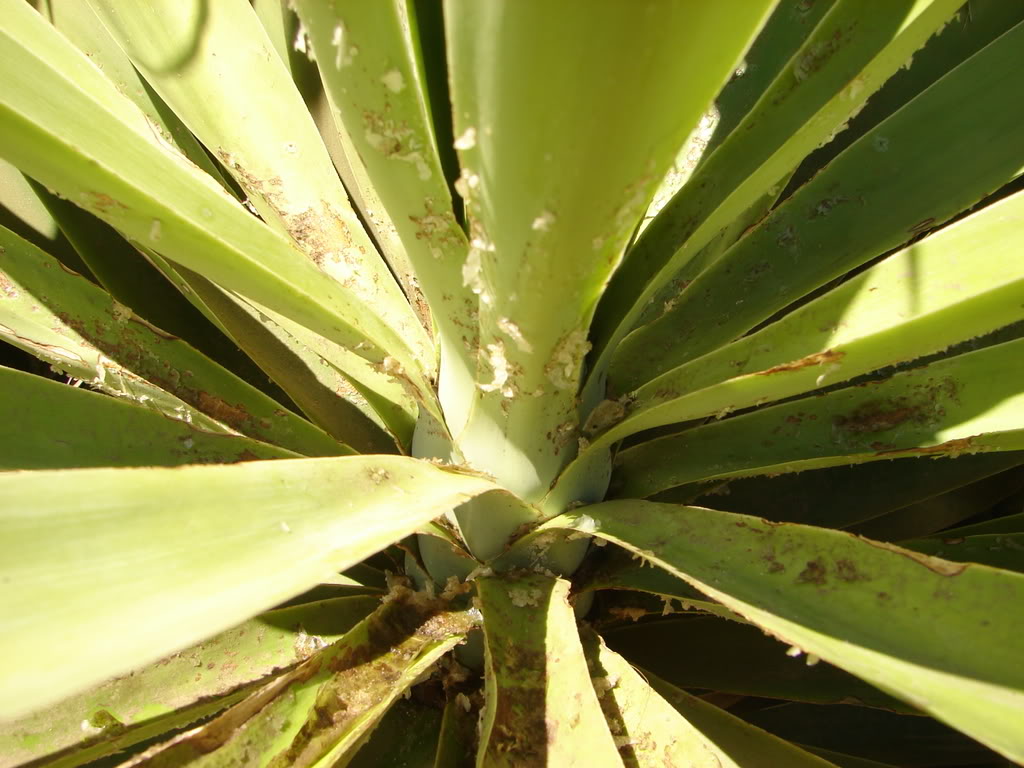
Spider mite infestation
The appearance of brownish spots with a yellow border indicates the appearance of anthracnose. The reasons for the development of a fungal infection include constant soil moisture, therapy consists in treating with a fungicide. A whitish bloom on leaf plates appears with powdery mildew. The treatment is the same as for any infectious lesion - with fungicidal preparations.
In order not to lose a palm tree, it is necessary to take proper care of it, observing the requirements for cultivation. Regular prophylaxis and constant examinations of the green part will help to detect pests and developing diseases in a timely manner.
Yucca flower care is not simple and does not require special knowledge. Proper watering, the optimal place to live, the absence of drafts will help to grow a beautiful and healthy plant, and not revive it after improper grooming.

